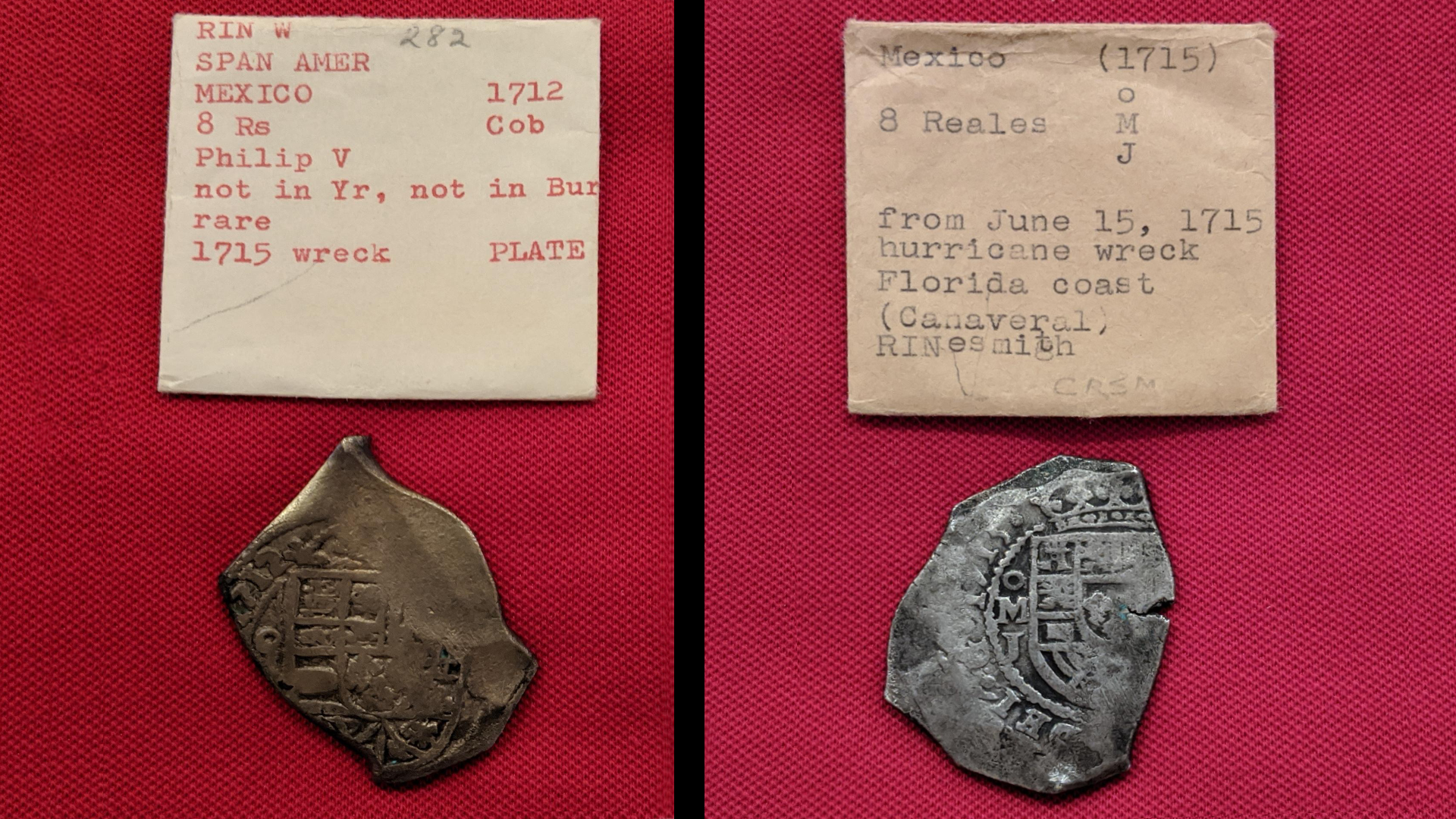Our Treasure of the Month for September features two silver eight reales from the Mexico City mint. Upon close observation, they do not appear to be particularly noteworthy, other than the fact that they are dated 1712 and 1715. There have been many auctions over the years that have offered similar coins for sale. So, from that standpoint, they are not really unique. But have you ever wondered about the very first auction that sold the very first Mexico City mint silver coin recovered by the Real Eight CompanyAlso referred to occasionally as “The Real 8 Company”- was incorporated in 1961. It had eight members….Kip Wagner, Kip Kelso, Dan Thompson, Harry Cannon, Lou Ullian, Del Long, Erv Taylor and Lis... More?
This is the story about that coin. The 1712 Mexico eight reales (pictured above) holds the distinction of being the very first Mexico City mint eight reales recovered by the Real Eight CompanyAlso referred to occasionally as “The Real 8 Company”- was incorporated in 1961. It had eight members….Kip Wagner, Kip Kelso, Dan Thompson, Harry Cannon, Lou Ullian, Del Long, Erv Taylor and Lis... More to be sold at public auction. For the very first time ever the story behind the sale of this iconic coin can now be told. Just how the 1715 coin (also pictured above) is related to this story will also be revealed.
It is often assumed that the first auction that featured coins salvaged by the Real Eight CompanyAlso referred to occasionally as “The Real 8 Company”- was incorporated in 1961. It had eight members….Kip Wagner, Kip Kelso, Dan Thompson, Harry Cannon, Lou Ullian, Del Long, Erv Taylor and Lis... More was the Christensen sale of February 8th, 1963. In fact, the first sale occurred almost a year before on May 12, 1962. The reason that this sale has gone unnoticed is because the coins offered, while clearly identified as from the 1715 Fleet, we’re not attributed to the Real Eight CompanyAlso referred to occasionally as “The Real 8 Company”- was incorporated in 1961. It had eight members….Kip Wagner, Kip Kelso, Dan Thompson, Harry Cannon, Lou Ullian, Del Long, Erv Taylor and Lis... More. Why is that?
We all know of the first spectacular gold finds made by the Real Eight CompanyAlso referred to occasionally as “The Real 8 Company”- was incorporated in 1961. It had eight members….Kip Wagner, Kip Kelso, Dan Thompson, Harry Cannon, Lou Ullian, Del Long, Erv Taylor and Lis... More in May of 1964 at Douglass Beach. The Douglass Beach WreckA 1715 Fleet wreck site located a few miles south of the Fort Pierce Inlet. It is often referred to by its old name, “Colored Beach.” In some early Real Eight Company correspondence, it was referr... More site is located a few miles south of present-day Fort Pierce. About a hundred of those gold coins were promptly auctioned in October of 1964 by Henry Christensen to benefit the needy partners of the Real Eight CompanyAlso referred to occasionally as “The Real 8 Company”- was incorporated in 1961. It had eight members….Kip Wagner, Kip Kelso, Dan Thompson, Harry Cannon, Lou Ullian, Del Long, Erv Taylor and Lis... More. Henry Christensen operated a highly respected auction house out of New Jersey. Most of his auctions, however, occurred in New York City.
Before the Real Eight CompanyAlso referred to occasionally as “The Real 8 Company”- was incorporated in 1961. It had eight members….Kip Wagner, Kip Kelso, Dan Thompson, Harry Cannon, Lou Ullian, Del Long, Erv Taylor and Lis... More struck gold, it had been working at the Cabin Wreck site for 3 years, finding some silver and artifacts but no gold. In January of 1961, Real Eight found its first large clump (or aggregate) of silver, yielding hundreds of silver reales in fine preservation when broken up.
Like many treasure hunting companies, the men of the Real Eight had no idea how to market their finds. With a few exceptions, most everything went into the bank as the company continued to struggle to cover operating costs. However, the president of the company, Kip WagnerKip Wagner (1906 – 1972) was instrumental in the formation of the team that later became the Real Eight Company and one of the greatest salvage groups that ever explored the 1715 Fleet wrecks. He ... More, had made some good contacts in the numismatic world, pre-eminent among them was the scholar Robert I. Nesmith.
Nesmith was a numismatist, photographer, and an authority on treasure hunting. He was a man of considerable reputation. Nesmith immediately proved critical to identifying and authenticating the very rare Mexican silver cobs the Real Eight CompanyAlso referred to occasionally as “The Real 8 Company”- was incorporated in 1961. It had eight members….Kip Wagner, Kip Kelso, Dan Thompson, Harry Cannon, Lou Ullian, Del Long, Erv Taylor and Lis... More had found.
Collectors and dealers had never seen anything like the coinage Real Eight was now wanting to sell. Nesmith gave real eight a letter of authentication to accompany its coins, and in the spring of 1962 went one step further. Nesmith persuaded the auctioneer Henry Christensen to offer a small sample of the Real Eight silver with an introduction by Nesmith himself.
However, the Real Eight CompanyAlso referred to occasionally as “The Real 8 Company”- was incorporated in 1961. It had eight members….Kip Wagner, Kip Kelso, Dan Thompson, Harry Cannon, Lou Ullian, Del Long, Erv Taylor and Lis... More was not associated specifically with this small grouping of coins. Why was that?
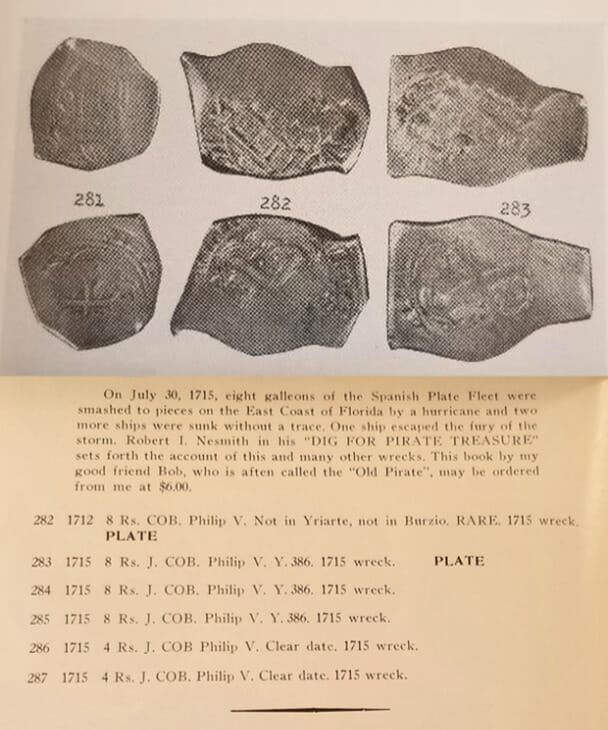
The silver coins were offered as a test, so to speak, to see what the reaction of the numismatic community would be. They were so rare that there was no track record of demand and no idea of what they would sell for. Up until this point, the Real Eight CompanyAlso referred to occasionally as “The Real 8 Company”- was incorporated in 1961. It had eight members….Kip Wagner, Kip Kelso, Dan Thompson, Harry Cannon, Lou Ullian, Del Long, Erv Taylor and Lis... More had found many thousands of silver coins but few gold coins. Always in need of money, the members of the Real Eight CompanyAlso referred to occasionally as “The Real 8 Company”- was incorporated in 1961. It had eight members….Kip Wagner, Kip Kelso, Dan Thompson, Harry Cannon, Lou Ullian, Del Long, Erv Taylor and Lis... More would sell their silver coins to individuals on a limited basis. They would charge what they thought the coins were worth. It is surmised that they wanted to see what their coins would actually sell for at auction. If the auction prices realized were below what the members of the company were already selling their coins for it could negatively impact their efforts to sell coins in the future. They had to know what their coins would sell for at auction without being identified as the source. Conversely, if the auction prices were higher, then the Company could raise the prices on their individual coin sales.
A total of six Mexico City reales were offered for sale. All were dated but not all of the dates were clear. The first coin offered for sale was lot 282, a Mexico eight reales dated 1712, which is our featured coin. The coin sold for the princely sum of $45.00 which today would translate into roughly $385.00. Obviously, the members of the Real Eight CompanyAlso referred to occasionally as “The Real 8 Company”- was incorporated in 1961. It had eight members….Kip Wagner, Kip Kelso, Dan Thompson, Harry Cannon, Lou Ullian, Del Long, Erv Taylor and Lis... More were not particularly pleased with the results of this auction as they were selling their coins for more than the auction realized.
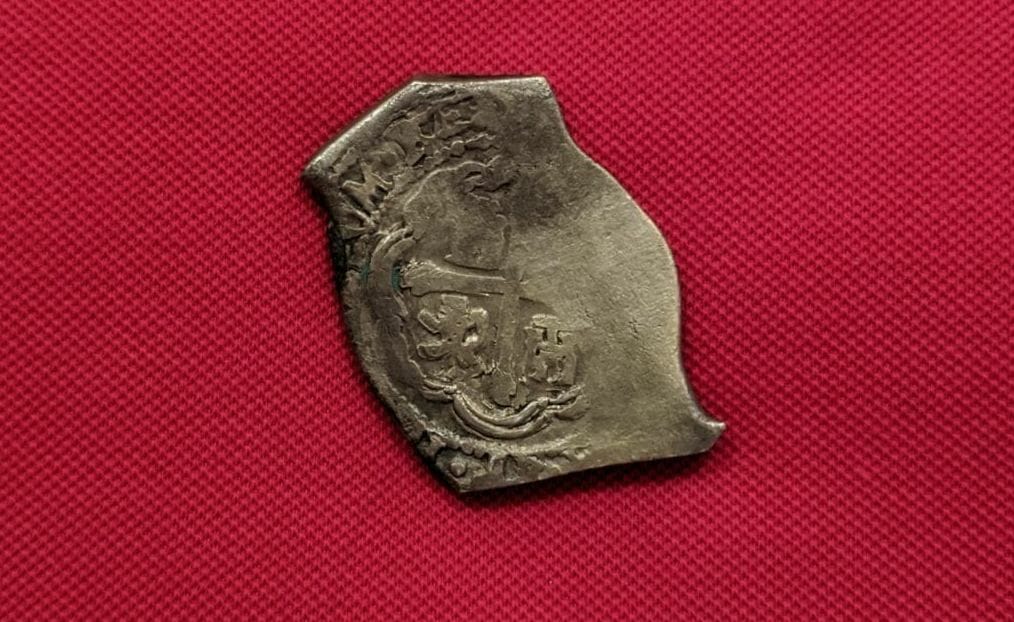
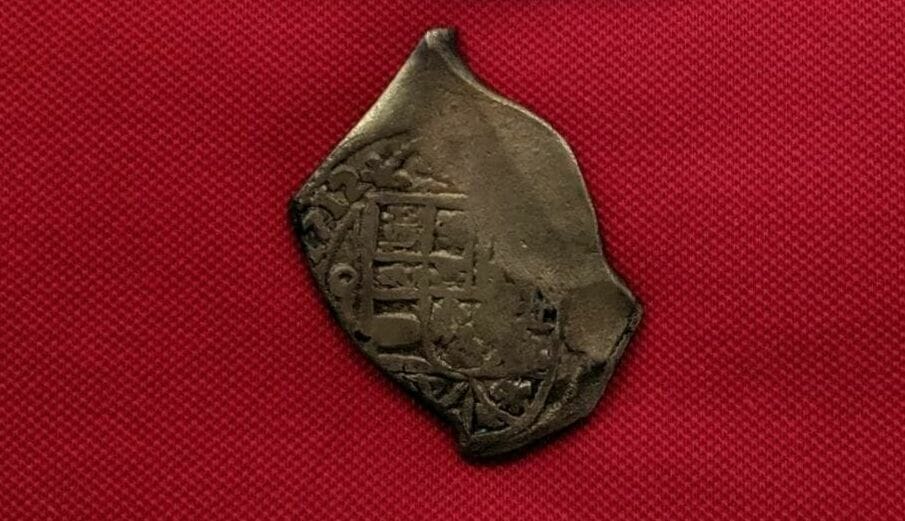
We can say without question that this 1712 came from one of the large aggregates, or clumps, that Real Eight found and broke apart in 1961. Until experts like Nesmith and Christensen began to advise them, Real Eight was in the habit of cleaning single silver coins with abrasives and in a tumbler. The result was a notoriously shiny silver coin with considerable loss of fine detail. Mercifully the interior clump coins did not need to be cleaned.
Our coin comes with its original Christensen San Cristobal 1962 auction flip. It weighs 26.5 grams.
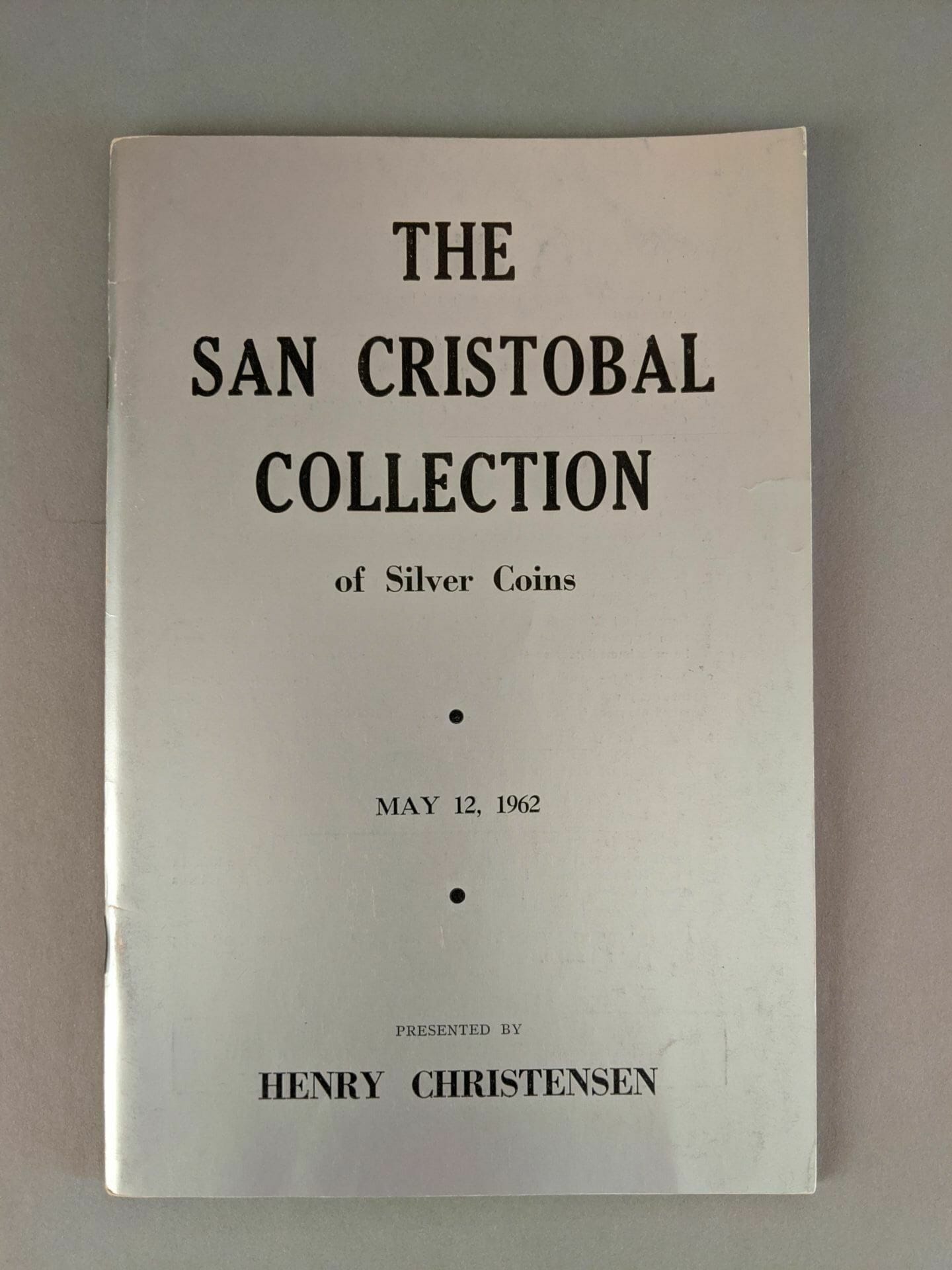
Along with this coin, we also featured a Mexico City 1715 dated eight reales. Although not part of the auction itself this coin was bought at the same time, but privately, from Robert I. Nesmith himself. It sold for several hundred dollars. Obviously much higher than the prices realized in the auction. It comes with the original flip with an incorrect date (June 15, 1715) attributed to the hurricane that destroyed the entire 1715 fleet. The coin weighs in at approximately 25 g. This was at the time an esteemed and extremely rare coin.
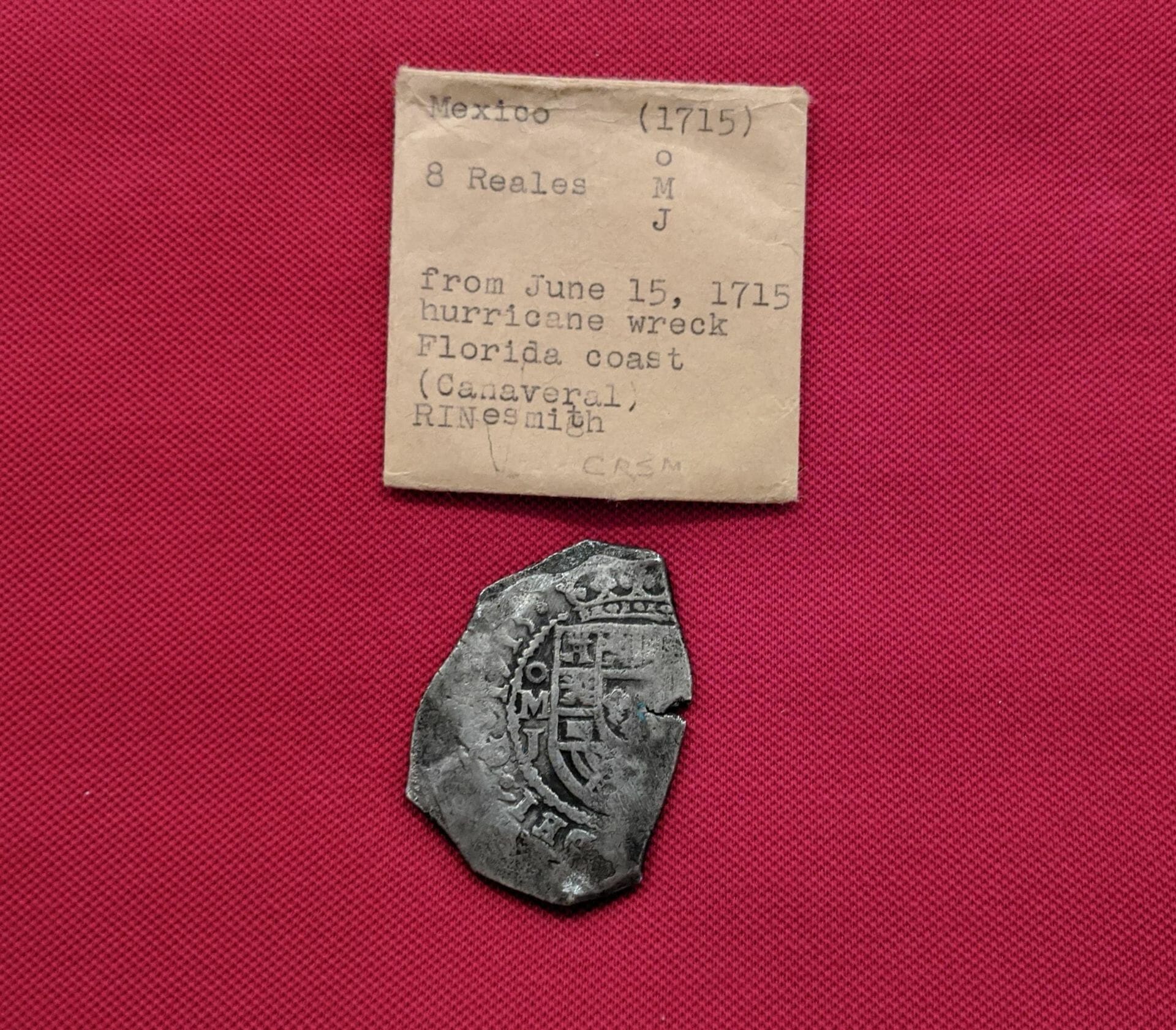
A close inspection of the coin shows a nearly full date together with a full OMJ (depicting the mint and assayer). A dated 1715 eight reales is still a rare coin. One specimen in 2014 sold for over $22, 000.00. The Real Eight CompanyAlso referred to occasionally as “The Real 8 Company”- was incorporated in 1961. It had eight members….Kip Wagner, Kip Kelso, Dan Thompson, Harry Cannon, Lou Ullian, Del Long, Erv Taylor and Lis... More never had a significant inventory of dated 1715’s. Lou UllianLouis J. (Lou) Ullian (1932 – 2010) Was a diver and original member of the Real Eight Company. A native of Worcester, Massachusetts he served in the U.S. Navy, Naval Weapons Station from 1956 – 19... More, one of the original Real Eight members who probably had the most numismatic knowledge of the entire group, estimated that dated 1715’s were 30 to 40 times rarer than 1714’s. When choice 1714’s were selling for $150.00, Real Eight was offering 1715’s for $500.00 to $1,000.00. Few 1715’s ever made it to Real Eight auctions because collector demand for the 1715’s was relentless.
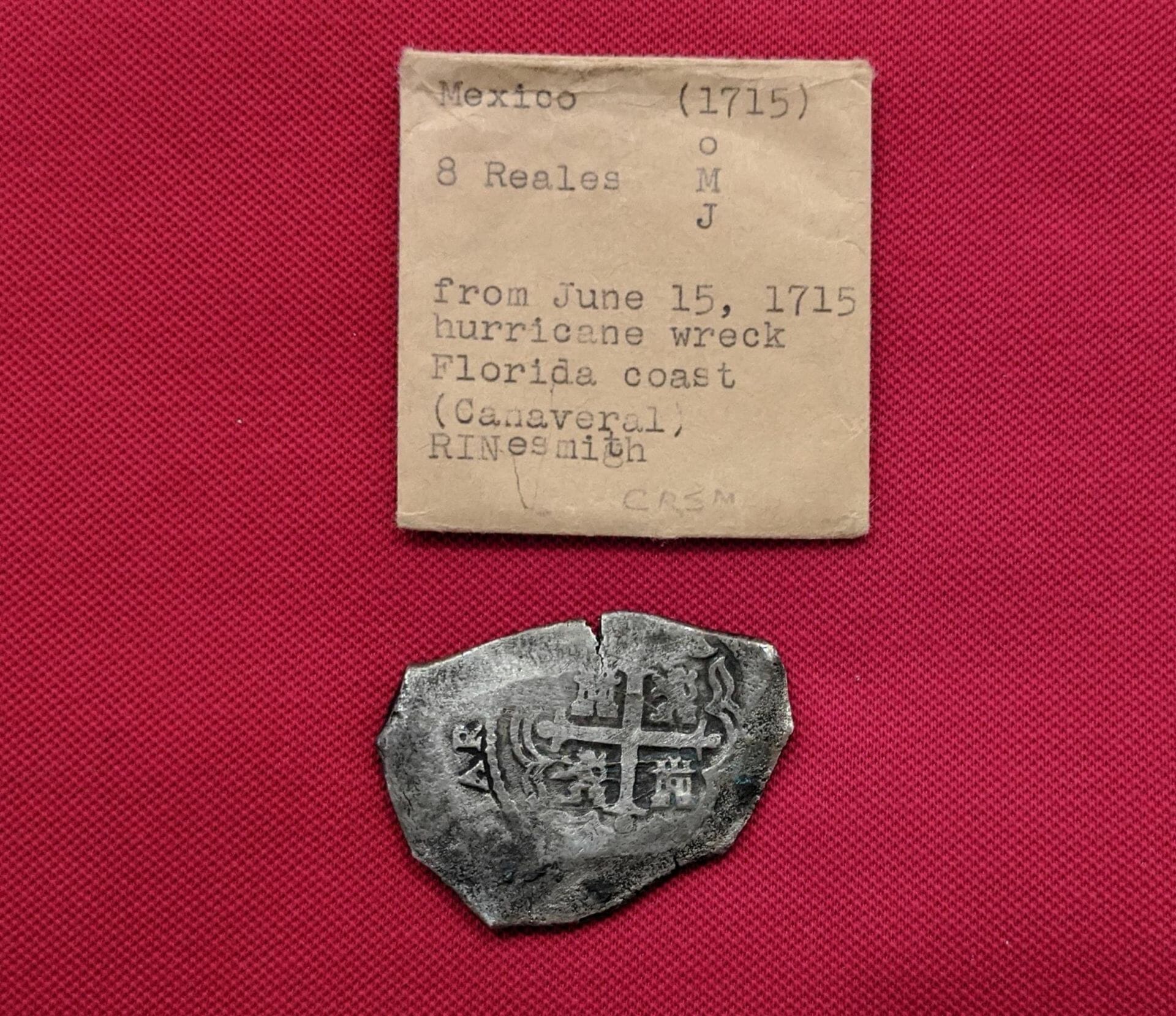
Both this 1715 and the accompanying 1712 have remained in one man’s collection since purchased in 1962. Extremely private, this collector has kept these coins hidden away for 58 years. Nothing was ever said or written about these coins, especially the 1712, given its distinction. It was through the scholarly research of Fleet Society Director and Academic Coordinator, Phil Flemming, that this story came to light. Special thanks to Phil for providing much of the information that went into this text and also for sharing the story with us. Also, thanks to Fleet Society Director John Pullin who provided auction information.
